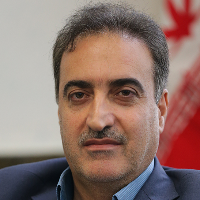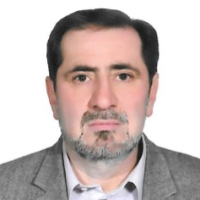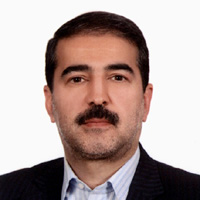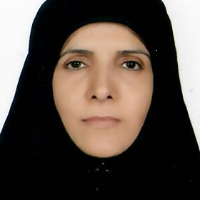Future Scenarios of Nursing Education in Iran
The ever-increasing speed of changes in today's world has led to the emergence of an era called uncertainty, and an environment full of opportunities and threats has made the current complex systems a precursor. One of the challenges of accurate and big planning for the future is the uncertainty inherent in the future and rapid changes in various fields in health. A powerful tool that predicts future competitive environments and develops long-term strategy even in environments with the greatest uncertainty is the scenario planning tool. Scenarios are descriptions of future situations and possible events in those situations so that a person can move from their current situation to a planned future. Scenario writing is not only a planning tool, but also an effective learning tool. Thinking about scenarios helps us to understand the logic of development, to recognize driving forces, trends and challenges. Drivers are a set of future-shaping forces that affect different futures globally or locally. Proponents perform the task of advancing and solving challenges simultaneously. For its development and sustainability, nursing education needs drivers so that it can maintain its existence in a turbulent age. Drivers are the main factors consisting of several processes that cause change in a studied area. Nursing education in the country, while having many challenges and crises, has diverse and somewhat unknown capacities. Drivers and trends that, if identified and applied, can overcome some of the existing challenges. Therefore, the current research tries to identify the key factors and the main drivers involved in nursing education and then by designing the desired and probable scenarios in the future, it provides a framework for policy making and flexible planning according to the conditions. Therefore, the current research was carried out with the aim of scenario planning the future of nursing education in Iran.
This research was conducted with an exploratory nature and with the aim of knowing the leading futures in the field of nursing education in Iran in the undergraduate course. In the first stage, in order to identify drivers and trends, qualitative interviews with nursing professors of Iran and Delphi universities were used. Sandelowski and Barroso's seven-step method was used for synthesis. In the second step, a semi-structured interview was used. The participants were selected in a goal-based way from nursing professors who had managerial experience in nursing education. Interviews were conducted by phone and in person. The Shannon entropy method was used to analyze the content of the codes. In the third step, the Delphi method was used to confirm and evaluate the drivers identified. 30 people, including nursing specialists (members of nursing board and teaching assistants and managers of nursing departments in all nursing schools of medical sciences universities of the country) participated in the research by means of targeted sampling. A report of the drivers and trends obtained from the previous stage along with a summary of the research method and research objectives was sent to the members. For evaluation, scoring was used in the form of 0 to 5. This process continued in three consecutive rounds of e-mail and face-to-face visits. Then, using a panel of experts, the influence and uncertainty of the identified trends were scored. In the next step, using influence/uncertainty diagrams, the key axes for writing the scenario were determined. Scenarios were designed by Scenario Wizard software version 11/4 and strategies were presented. The validity of the scenarios was examined from the four perspectives of feasibility, internal consistency, usefulness and differentiation. All four conditions were acceptable according to the experts.
In the meta-synthesis stage, after internet search, 723 articles were reviewed, among which nine articles were used for the final analysis. At the end of this stage, the researcher identified 127 codes, which according to the purpose of the research and also based on the semantic proximity and the only verbal difference between some codes, the codes were merged and brought under a common title. Finally, 24 codes were identified. In the next step, considering the concept of each of these codes, they were categorized into a similar concept. In order to evaluate the quality, the results were given to one of the experts to be evaluated by the Kappa index. Using SPSS version 16 software, at a significance level of 0.05, this coefficient was obtained as 0.83, which shows the appropriate reliability of the codes. In the interview phase, 17 nursing professors (2 professors, 6 associate professors, 6 assistant professors, and 3 instructors) with an average clinical experience of 16 ± 1.2 years and an average managerial experience of 6 ± 3.1 years were interviewed. A total of 23 interviews were conducted with an average of 25-30 minutes. 15 of the interviews were conducted over the phone and the rest of the interviews were conducted in person. In this step, 356 codes were obtained. The findings of the content analysis were categorized using Shannon's entropy, and the results were entered into the next step for agreement and confirmation. In the third step, the experts agreed on 6 drivers and 31 trends. With five key uncertainties, the scenario was designed in three optimistic, intermediate and pessimistic assumptions. According to the size of the matrix and its dimensions (15 x 15), four problem-oriented, ethical, maintaining the status quo and closed educational system scenarios were reported for nursing education in Iran.
In the current study, four different scenarios were designed. Ultimately, each of these scenarios is believable and each has the potential to be realized, but which one will happen depends on today's plans. Scenarios have no prescription for the future itself, but rather a short film of the possibilities that may occur. This research is an analysis of the reliable results of our current possible actions. Further researches can obtain indicators for these scenarios. The application of future planning methods such as scenario in Iran's national health system can be considered as a warning system for awareness of opportunities and threats before the crisis. In order to improve the future of nursing education in Iran, it is recommended to form an expert working group with technical skills of scenario planning for more coordination in the strategic planning of specialized and sub-specialized fields and to formulate a comprehensive plan for the correct implementation of future planning projects. The manager or decision maker of the health field can see the serious part of the consequences of different decisions in the form of future scenarios of experience and future failure points right now.
- حق عضویت دریافتی صرف حمایت از نشریات عضو و نگهداری، تکمیل و توسعه مگیران میشود.
- پرداخت حق اشتراک و دانلود مقالات اجازه بازنشر آن در سایر رسانههای چاپی و دیجیتال را به کاربر نمیدهد.





